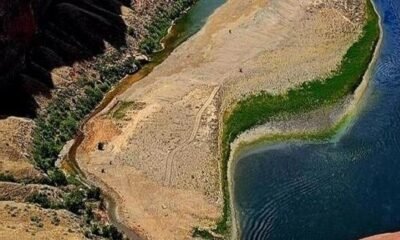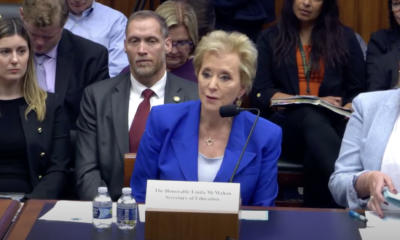Business
Can Lessons from Past Policies Secure a Sustainable Future for Colorado River Users?

In 1858, the U.S. Army tasked Second Lieutenant Joseph Christmas Ives with exploring the Colorado River aboard a steamboat. The aim was to enhance government knowledge of this crucial waterway. Ives’s narrative reveals numerous challenges, including moments when the vessel ran aground in the river’s rocky and twisting path from Colorado to the Pacific Ocean.
During his expedition, Ives relied on the expertise of native Chemehuevi to navigate deeper waters, a skill they demonstrated effortlessly on lightweight reed rafts. This historical context was a focal point during the 45th Colorado Law Conference on Natural Resources, where University of Colorado historian Patty Limerick emphasized the importance of learning from the past.
As several key agreements regarding the Colorado River are set to expire next year, Limerick urged stakeholders to reflect on Ives’s expedition. “He had the opportunity to tell his nation, ‘we need to rethink this,’” she noted, highlighting the overlooked realities of the river that defy assertions of control by settlers.
Today, the Colorado River supports 40 million people across the southwestern U.S. and Mexico, including 30 Native American tribes. It also generates power for 2.5 million residents and irrigates 5.7 million acres of farmland. The river’s management is governed by century-old agreements, such as the 1922 Colorado River Compact, which allocated 17.5 million acre-feet of water annually, a figure already deemed unsustainable at the time.
Although the river historically supplied an average of 15.2 million acre-feet per year through the 20th century, water flows have since decreased by approximately 4 million acre-feet. Colorado State University hydrologist Brad Udall warned stakeholders about future projections, calling them potentially too optimistic. “Our current climate projection is beyond awful,” he stated, pointing to expected global temperature rises of up to 3 degrees Celsius by century’s end.
Decades prior to heightened concerns over climate change, the Colorado River was divided into upper and lower basins, each promised equal water allocations. However, with rapid population growth primarily in California, the lower basin’s consumption has consistently surpassed that of the upper basin. This imbalance continues to spark tensions as states enter negotiations for future agreements.
Three pivotal agreements regulating water use are set to lapse, including the 2008 Interim Guidelines and the 2019 Drought Contingency Plan. Stakeholders insist these agreements must address contemporary environmental and industrial challenges while recognizing the historical exclusion of native tribes from water policymaking.
Lorelei Cloud, a member of the Southern Ute Indian Tribe and the Colorado Water Conservation Board’s first indigenous chair, emphasized the need for policy reform based on indigenous perspectives. “We have a different relationship with caring for the river,” she asserted, advocating for the incorporation of indigenous wisdom in future management frameworks.
The Colorado Law Conference will continue its sessions, spotlighting the contributions of indigenous tribes and federal administrators in the discussions surrounding the river’s future.

















